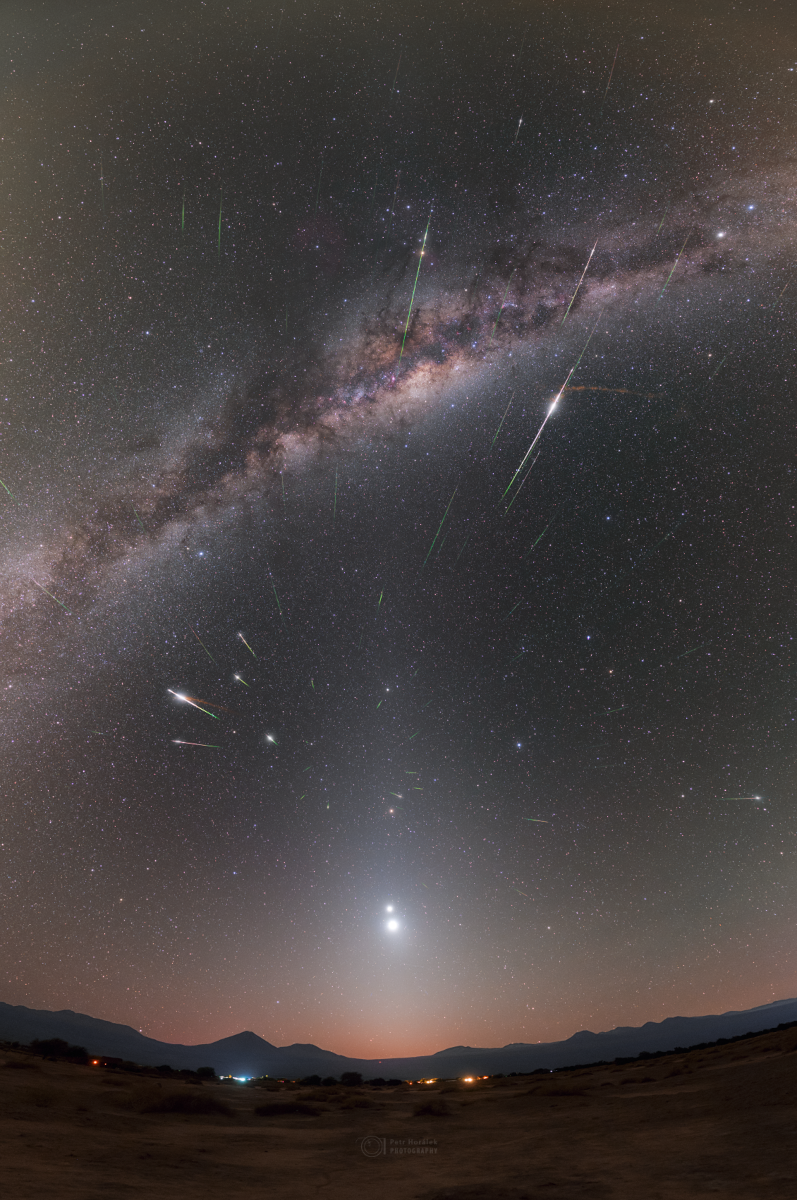안녕하세요, 잡학다식 입니다. 오늘은 과연 나사에서 어떤 방식으로 우주의 형상을 표현해 줄까요?
우선 이미지부터 볼 수 있도록 하겠습니다

해당 사진의 이름은 Halley Dust, Mars Dust, and Milky Way 인데요 우선 NASA에서 공식적으로 발표한 설명들을 확인해 보겠습니다
Grains of cosmic dust streaked through night skies in early May. Swept up as planet Earth plowed through the debris streams left behind by periodic Comet Halley, the annual meteor shower is known as the Eta Aquarids. This year, the Eta Aquarids peak was visually hampered by May's bright Full Moon, though. But early morning hours surrounding last May's shower of Halley dust were free of moonlight interference. In exposures recorded between April 28 and May 8 in 2022, this composited image shows nearly 90 Eta Aquarid meteors streaking from the shower's radiant in Aquarius over San Pedro de Atacama, Chile. The central Milky Way arcs above in the southern hemisphere's predawn skies. The faint band of light rising from the horizon is Zodiacal light, caused by dust scattering sunlight near our Solar System's ecliptic plane. Along the ecliptic and entrained in the Zodiacal glow are the bright planets Venus, Jupiter, Mars, and Saturn. Of course Mars itself has recently been found to be a likely source of the dust along the ecliptic responsible for creating Zodiacal light.
이번에도 광활한 우주 앞에 인간이 얼마나 작은 존재인지 다시 한번 알게 되는것 같습니다
저는 내일도 더 좋은 사진과 함께 돌아오겠습니다, 그럼 행목한 하루 되시길 바랍니다
'과학상식' 카테고리의 다른 글
| NASA 나사의 오늘의 이미지들 (2023-05-14) (0) | 2023.05.15 |
|---|---|
| NASA 나사의 오늘의 이미지들 (2023-05-13) (0) | 2023.05.14 |
| NASA 나사의 오늘의 이미지들 (2023-05-11) (0) | 2023.05.12 |
| NASA 나사의 오늘의 이미지들 (2023-05-10) (0) | 2023.05.11 |
| NASA 나사의 오늘의 이미지들 (2023-05-09) (0) | 2023.05.10 |